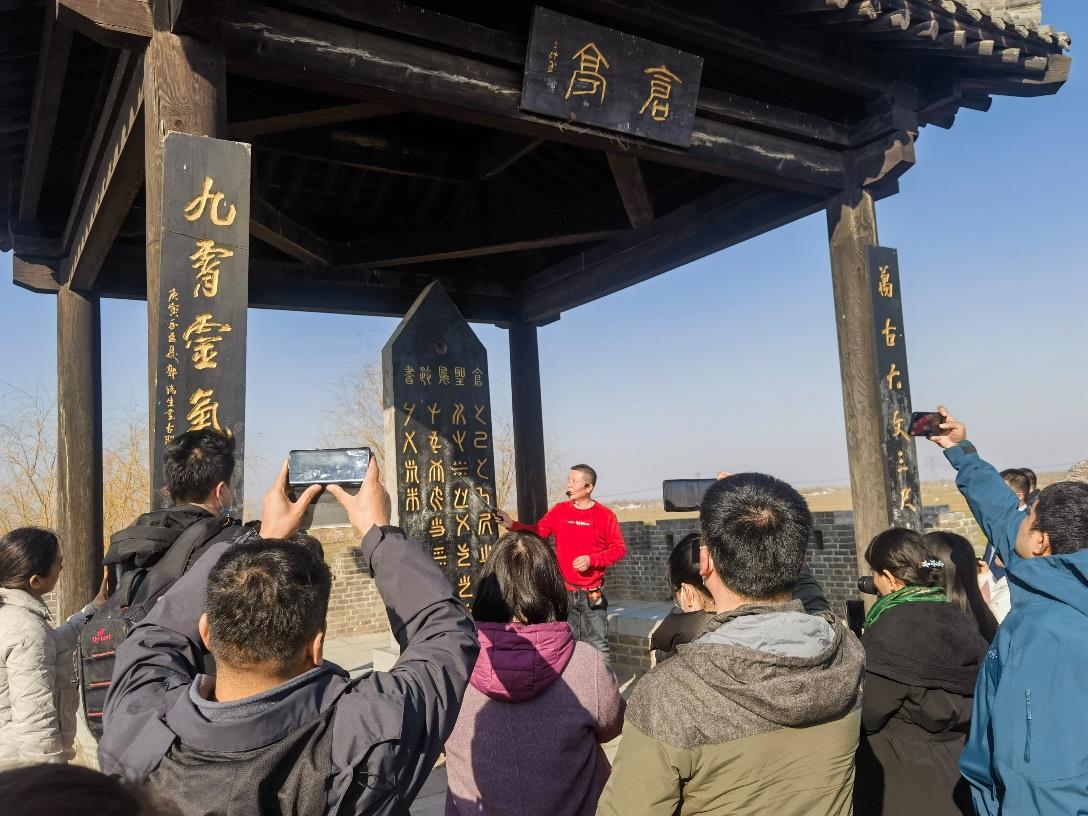Freehand brushwork China explores the origin of Chinese characters. The "ancestor of Chinese characters" is actually a special holiday commemoration of his United Nations.
Cctv news(Reporter Wei Junhao) As one of the oldest characters in the world, how did Chinese characters come into being? On February 19th, "Freehand brushwork in China — — Exploring the Origin of Chinese Characters "The online theme propaganda interview group went into Nanle County, Puyang City, Henan Province, to explore the origin of Chinese characters and feel the profound Chinese culture.
Cang Xie Cultural Museum in Nanle County, located in Shiguan Village, Liangcun Township, 20 kilometers northwest of Nanle County, has Cangjie Ling and Cangjie Temple, which was specially built to commemorate Cang Xie.
According to relevant records, Cang Xie was the official historian of Xuanyuan Huangdi. "Before there were no words, the tribes at that time mainly made notes by knotting knots, memorabilia and small things. With the expansion of the Yellow Emperor tribe, Cang Xie couldn’t remember what happened in big things and what happened in small things, and needed a new method of keeping notes urgently. Since then, Cang Xie has watched the changes of the sun, the moon and the stars, and watched the changes of the forms of all things, invented our oldest pictograph, and opened a new chapter in Chinese culture. " Pang Xingang, a lecturer at the Cang Xie Cultural Museum, explained.

"Cang Xie created many words in his life, but now there are only 28 words left." Pang Xingang said that these 28 words are pronounced as: "Wu Si A and B, who are friends in the first place, stop in the world, and have a glorious reputation. They are home to each other, respected by Chishui and attacked by Ge Mao." Under the leadership of Emperor Xuanyuan, he defeated Chiyou, United all tribes, lived and worked in peace and contentment in the Yellow River valley, and agricultural civilization began.
With the general form of Chinese characters, the characters made in Cang Xie gradually made them easier to remember and write, and gradually evolved from simple symbolic forms into modern Chinese characters that we are familiar with. The creation of characters by Cangjie is of great significance to the evolution of China characters and the development of China culture. He is also known as "the ancestor of Chinese characters", "the father of the three religions" and "the Sect of All Saints".
In 2010, the United Nations designated "Grain Rain" in the 24th solar terms of the lunar calendar as Chinese Day to commemorate the contribution of Cangjie, the ancestor of Chinese characters.
Although Cang Xie has been buried under the loess of Nanle, the Chinese characters he created are timeless and have become the most meaningful and profound human language.